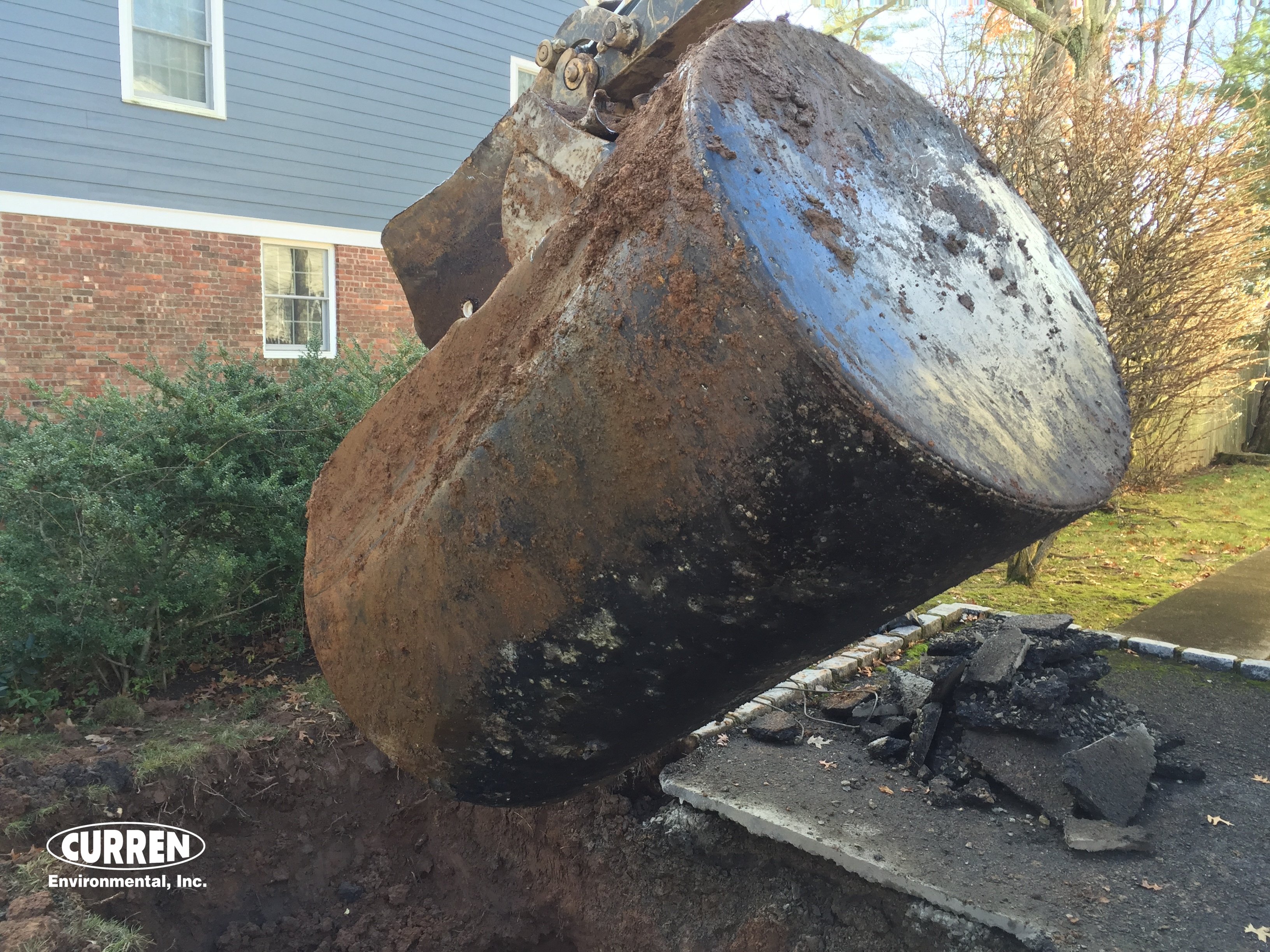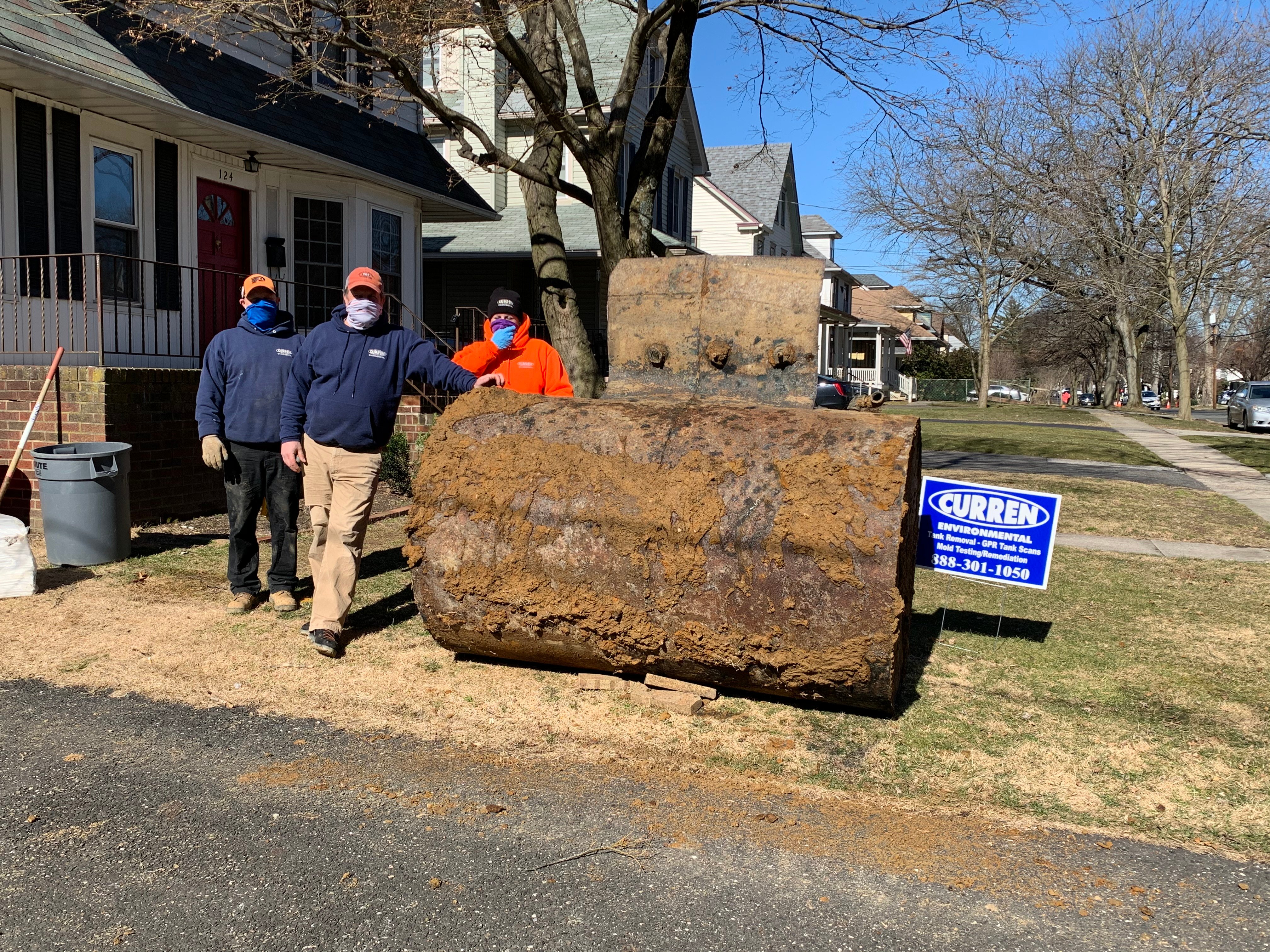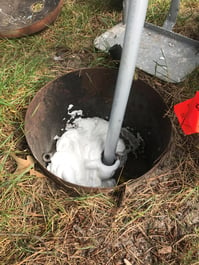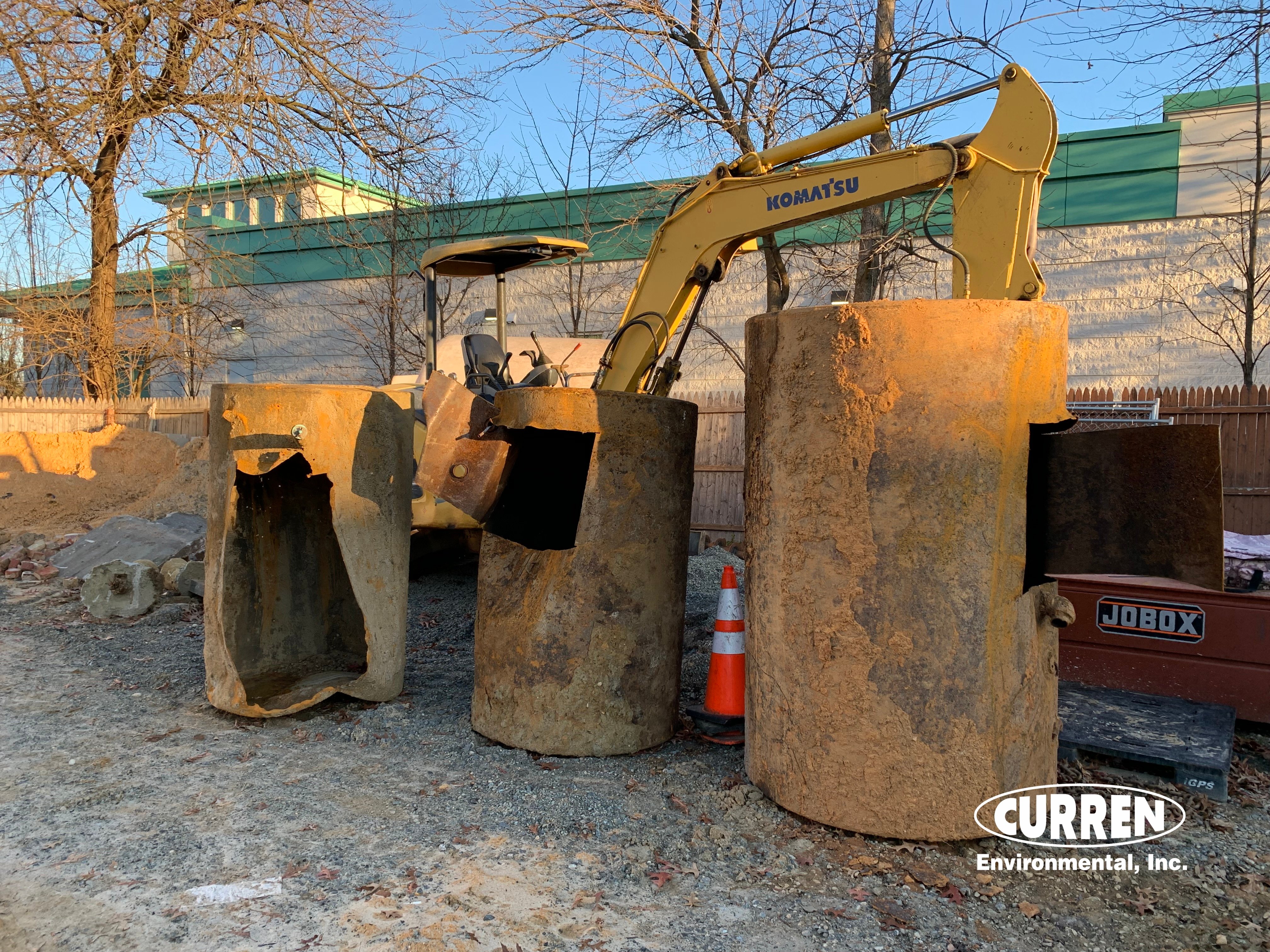New Jersey Oil Tank Removal & Abandonment
A Common question is what does New Jersey require regarding removal of underground heating oil tanks. New Jersey has two regulatory bodies that regulate issue with residential (unregulated heating oil tanks UHOT). The NJDEP regulates issue with heating oil tanks WHEN some evidence of a release (leak) is found from a heating oil tank. The State of New Jersey Department of Community Affairs (DCA) Division of Codes and Standards regulates the removal and abandonment of heating oil tanks.
Every oil tank in NJ will have to be involved with DCA, on a local level as you will need a permit to remove the tank. This permit will also entail having a representative from the municipality to inspect the tank closure (removal or filling in place) on the day of work. You will receive an approval of the work from the towns, which basically means that you did what you said you were going to do which is remove or fill a tank in place. Local inspection and approval does not certify the tank did not leak. It only means you performed what the task the permit was for.

Some tanks will have NJDEP involvement, which is required when an oil leak is found from the tank. Clearly you would prefer to have a tank that does not leak, but you are dealing with an old buried metal object and rust never sleeps, so a leak is certainly not uncommon. NJDEP processes thousands of tank leaks a year and is fairly efficient in addressing tank leaks.
NJ Construction Code by DCA
The following is taken from the New Jersey DCA regarding the various requirements for removal and abandonment of heating oil tanks.
The Department of Community Affairs (DCA) has issued Bulletin Nos. 88-3, 91-4, and 93-1 to address the when, who, and how of the abandonment of small underground storage tanks. These bulletins addressed when tanks need to be abandoned, who is responsible for inspection, and how tanks are to be abandoned. The information contained in those bulletins is reprinted here.
WHEN:
The Uniform Construction Code (UCC) is not a retrofit code and, therefore, it does not deal well with tanks that have been abandoned for some time. A rule of thumb for the applicability of the UCC is that either some type of construction activity has to be taking place, or an unsafe structure has to be present. A circumstance involving abandonment of underground storage tanks where construction activity is taking place is a conversion from fuel oil to natural gas. In this case, officials must ensure that the tank is abandoned in connection with the conversion. This can be done by requiring the contractor to either include the abandonment of the tank as part of the permit for the conversion, or have another contractor obtain a permit for the abandonment as a prerequisite for the conversion permit. The only exception to this would be where the owner can demonstrate a legitimate continued use of the tank. In cases where a tank is no longer in use and no construction activity is taking place, the only way officials can require the tank to be removed or abandoned is by calling it an unsafe structure. The safety of the tank is related to structural integrity. The condition of an underground storage tank is difficult, if not impossible, to determine without excavating the tank. When such tanks are found, owners should be encouraged to either abandon them or remove them because, eventually, the tank will become unsafe. In cases where the owner refuses, the official can request some verification of the condition of the tank.
When tanks are to be abandoned or removed, a demolition permit should be issued. The permit should contain specific details on how the tank is to be safeguarded.
WHO:
Since abandonment procedures for underground storage tanks are contained in documents referenced in the adopted subcodes, no inspection responsibility has been specifically assigned for this work. Therefore, it is appropriate for the construction official to assign responsibility to one inspector licensed in the Building, Fire, or Plumbing Subcode.
HOW:
As mentioned above, the adopted subcodes do not contain provisions for abandoning tanks. However, there are provisions in both the Building Officials and Code Administrators National Fire Prevention Code Section F-3208.11 and NFiPA 30, Appendix C relating to the abandonment of underground storage tanks. These documents are referenced standards in the adopted subcodes, and therefore in accordance with N.J.A.C. 5:23-3.6, are accepted engineering practice. In order to provide additional guidance to code officials, the DCA has expanded on the information contained in the referenced standards. Either abandonment or removal is acceptable, and the procedures listed below are typical of what is acceptable for removing or abandoning storage tanks. Only where special conditions exist can an inspector insist on removal. Such a case might be where well water is used and the soil needs to be checked for contamination. For all of the methods listed, inspectors must ensure that fill and vent pipes for above-ground (in basements) or underground tanks are removed when the tank is removed or abandoned. Several accidents have occurred where fuel-oil deliveries have been made to incorrect addresses where a fill pipe was left in place after the tank was removed. Fuel oil has been pumped into a basement or the ground resulting in expensive cleanups.
Example A -- Above-Ground Tank Removal
1. Remove oil from tank.
2. Cut oil tank in half by removing top.
3. Remove sludge after squeegeeing.
4. Hand wipe inside of tank clean.
5. Remove tank (and fill and vent pipes, if separate) and dispose at proper
facility. (Most scrap-metal yards will accept cleaned storage tanks.)
6. Dispose of all sludge, water, etc. at a licensed facility. Have oil reclaimed, or
dispose of it at a licensed facility.
Example B -- Underground Tank Removal

1. Remove oil from tank.
2. Excavate tank.
3. Cut hole in tank of adequate size to permit cleaning.
4. Enter and squeegee tank.
5. Remove sludge.
6. Hand wipe inside of tank clean.
7. Remove tank (and fill and vent pipes, if separate).
8. Check tank for visible leaks and determine if there is contaminated soil.
9. Backfill hole.
10. Dispose of tank at proper facility. (Most scrap-metal yards will accept
cleaned storage tanks.)
11. Dispose of all sludge, water, etc. at a licensed facility. Have oil reclaimed, or
dispose of it at a licensed facility.
Example C -- Underground Tank - Petrofill Foam and Cement
Slurry
1. Remove oil from tank.
2. Pour in oil-absorbent material, such as “Quick-Dry,” through oil-fill hole.
3. Pump in petrofill foam or cement slurry through oil-fill hole and fill tank completely.

4. Remove fill pipe and vent pipe.
5. Dispose of all sludge, etc. at a licensed facility. Have oil reclaimed, or dispose
of it at a licensed facility.
Note: This method might not be appropriate in areas with high groundwater. Tanks could become buoyant.
Free Initial Consultation
888-301-1050
Example D -- Underground Tank - Plastic Gravel
1. Remove oil from tank.
2. Excavate top of tank.
3. Cut hole in tank of adequate size to permit cleaning.
4. Enter and squeegee tank.
5. Remove sludge.
6. Hand wipe inside of tank.
7. Blow in plastic gravel.
8. Replace tank cover and seal openings.
9. Remove fill and vent pipes, and seal openings.
10. Backfill hole.
11. Dispose of sludge, water, etc. at a licensed facility. Have oil reclaimed, or
dispose of it at a licensed facility.
Note: This method might not be appropriate in areas with high ground
water. Tanks could become buoyant.
Example E -- Underground Tank - Sand or Pea Gravel
1. Remove oil from tank.
2. Excavate top of tank.
3. Cut hole in tank of adequate size to permit cleaning.
4. Enter and squeegee tank.
5. Remove sludge.
6. Hand wipe inside of tank.
7. Fill tank with sand or pea gravel.
8. Replace tank cover or dispose of at a scrap-metal facility.
9. Remove fill and vent pipes.
10. Backfill hole.
11. Dispose of sludge, water, etc. at a licensed facility. Have oil reclaimed, or
dispose of it at a licensed facility.


